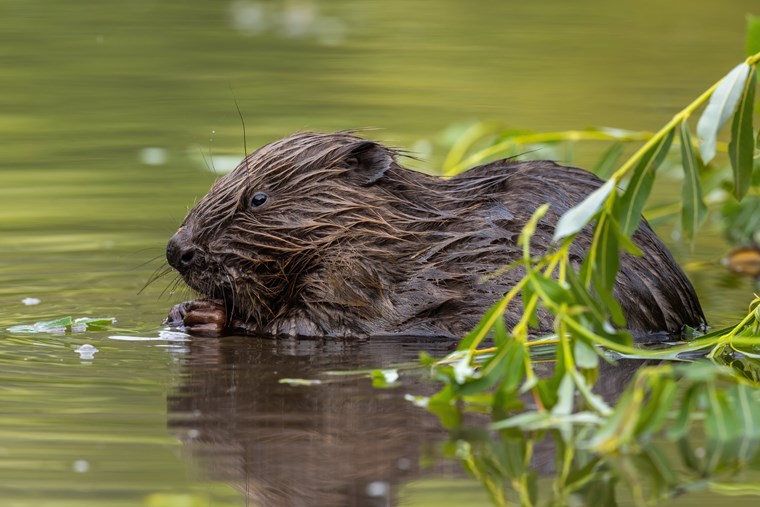New resources to help farmers manage land with beavers

Beavers can increase biodiversity
The Farm Advisory Service has published new resources to help farmers learn about managing land with beavers.
Beavers have been reintroduced to Scotland over the last two decades after being hunted to extinction in the 16th century. In 2021 the Scottish Government announced a policy change to increase the translocation of beavers across Scotland, supporting the expansion of their population.
While some areas are unsuitable for beavers due to their topography, agricultural value and important infrastructures, there are ideal places throughout Scotland where their presence will not cause serious concern to humans, infrastructure, or wildlife.
The impacts from beaver activity on land varies throughout Scotland. There are several options available to farmers to help them live alongside beavers and effectively mitigate their activity if required. Their presence can increase biodiversity and natural hydrological process and evidence is already being seen by farmers who are currently living alongside them.
The Farm Advisory Service (FAS) have produced a series of case study videos featuring farmers discussing their experiences of implementing beaver management options. There are also interviews with stakeholders including NatureScot, Beaver Trust and The Cairngorm National Park which discuss their plans to translocate beavers to the National Park.
Through the resources on the FAS website, farmers can find out more about beavers, their beneficial and adverse impacts on land, the hierarchal management options in Scottish Government’s Beaver Management Framework, and what is involved in a translocation process. All information aligns with NatureScot’s beaver mitigation scheme and links to further advice can be found within the resources.
Rachel Smillie from SAC Consulting, who helped produce the resources, said: “Beavers are getting a lot of press at the moment and I’m glad farmers now have these resources so they know what their options are and where to find more information. When producing the case study videos, we visited farmers who have beavers or have seen some beaver activity on their land.
“It was great to see first-hand how they are living alongside them, and the management actions they use to mitigate unwanted impacts. The videos showcase that when beavers are in suitable landscapes, minimal to no intervention is needed as their activity is contained within the riparian zone. However, the videos are also a good example of showing the options available to farmers when they turn up in unsuitable areas, and the value of NatureScot’s Beaver Mitigation Scheme in providing support.”
Posted by Farm Advisory Service on 25/08/2023
